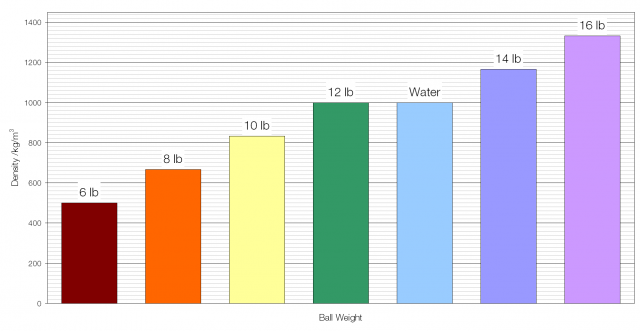The largest bowling ball allowed by USBC or FIQ has a circumference of 27 inches, equivalent to a diameter of 21.9 centimetres and a volume of 5447 cubic centimetres. Whilst the size of a bowling ball is fixed, its weight can vary, typically between six and sixteen pounds (2.7 to 7.3 kilograms).
With a fixed volume and a changing mass the density (mass per unit volume) of a bowling ball will change, and as a result some bowling balls float, and some sink.
 The low weight balls (including the 12 lb ball at a density of 999.6 kg/m3) all float. Only the 14 lb and 16 lb balls will sink.
The low weight balls (including the 12 lb ball at a density of 999.6 kg/m3) all float. Only the 14 lb and 16 lb balls will sink.